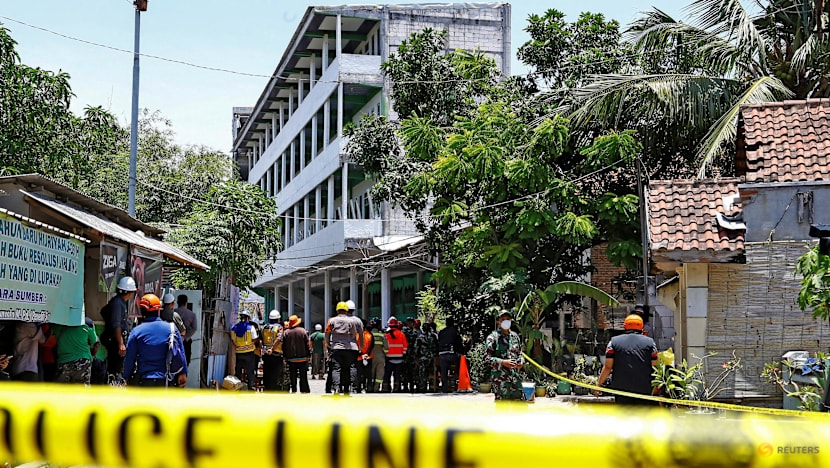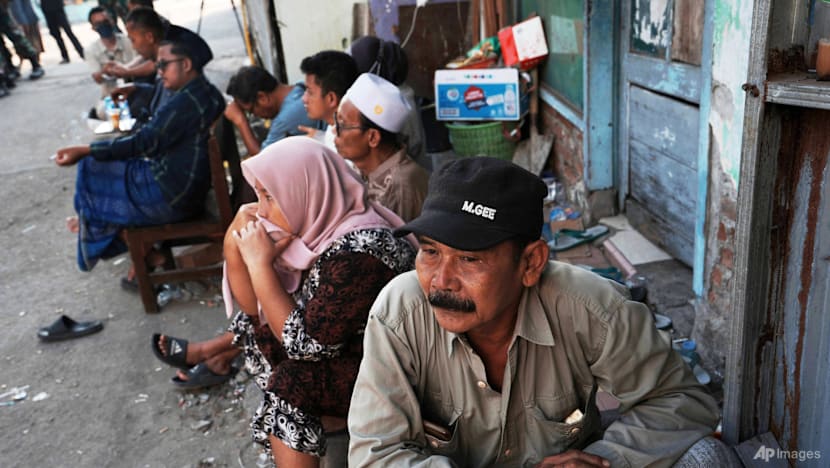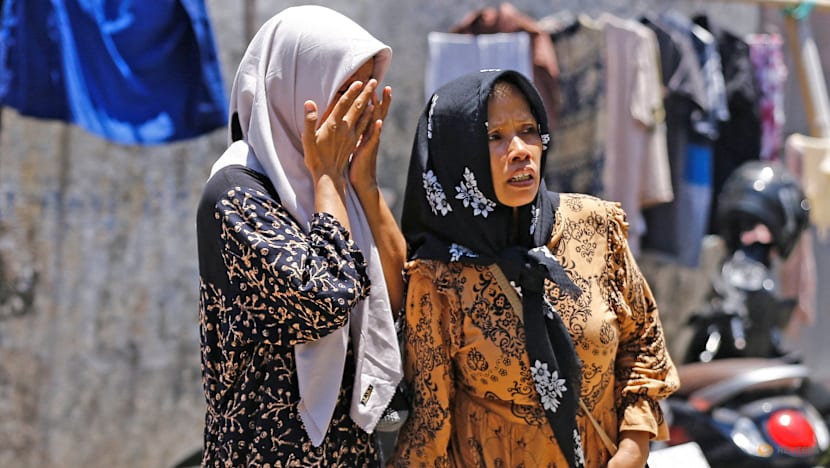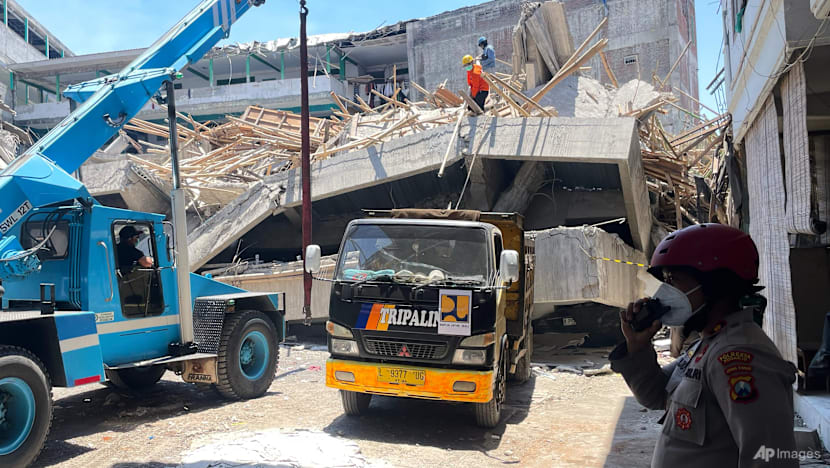No more signs of life in Indonesia school collapse, with 59 still missing: Rescuers
The Al Khoziny boarding school, located in the East Java town of Sidoarjo, collapsed when its foundations could not support ongoing construction work on the upper floors.

Rescuers gather near the site of a building collapse as search and rescue operations continue at Al Khoziny Islamic boarding school in Sidoarjo, East Java province, Indonesia, on Oct 2, 2025. (Photo: Reuters/Dipta Wahyu)
SIDOARJO, Indonesia: Rescuers detected "no more signs of life" under the rubble of a collapsed Indonesian school where 59 people remain missing, an official said Thursday (Oct 2), raising fears that no more survivors would be found.
"We used high-tech equipment like thermal drones, and, scientifically, there were no more signs of life," said Suharyanto, the head of the country's disaster mitigation agency, during a press briefing at the site of Monday's collapse in eastern Java.
The Al Khoziny boarding school, located in the East Java town of Sidoarjo about 780km east of Jakarta, collapsed when its foundations could not support ongoing construction work on the upper floors, crushing dozens of students who were praying and trapping them under rubble.
Rescuers had been racing against time to extricate those trapped.
Five survivors were pulled from the rubble on Wednesday.
Abdul Muhari, spokesperson with the disaster mitigation agency, said in a statement on Thursday that 59 people remained trapped, based on the school's list of absences and missing person reports filed by families.


Rescuers found no signs of life on Thursday after calling out the names of the victims and using motion detectors and scanners to track movements or vital signs, search and rescue agency official Emi Freezer told Reuters.
In signature orange uniform, rescuers crawled through narrow tunnels to find students trapped under rubble, according to photos distributed by the agency.
A crane has been deployed on Thursday to lift light, unconnected debris.
Al Khoziny is an Islamic school known locally as a pesantren.
Indonesia, the world's largest Muslim-majority nation, has a total of about 42,000 pesantren, serving 7 million students, according to data from the country's religious affairs ministry.
Waiting along with other anxious parents convening around a whiteboard showing a list of survivors, Ahmad Ikhsan, 52, was still holding out hope that his 14-year-old son, Arif Affandi, would be found.
"Until now, I haven't heard about my son," he said. "I believe my son is still alive."
COMPLEX OPERATION
The rescue operation is complex as vibrations happening in one place can impact other areas, said Mohammad Syafii, head of the National Search and Rescue Agency.
"So now, to reach the spot where the victims are, we have to dig an underground tunnel," he told reporters.
But digging itself poses challenges, including destabilising the rubble. And any tunnel will provide an access route only around 60cm wide because of the structure's concrete columns.
Thermal-sensing drones are being used to locate survivors and the deceased as the 72-hour "golden period" for best survival chances comes to an end.
The families of the missing agreed on Thursday for heavy equipment to be used, said Pratikno, the coordinating minister for human development and cultural affairs.
Rescuers would exercise "extreme caution", he added.
But the operation could last longer than seven days if people are still missing, a search and rescue agency official told AFP.

NO LONGER CONSIDERING POSSIBILITY OF SURVIVORS
Five people have been confirmed dead so far, and of about 105 who were injured, more than two dozen are still hospitalised, with many said to have suffered head injuries and broken bones.
The students were mostly boys in grades seven to 12, between the ages 12 and 19. Female students were praying in another part of the building and managed to escape, survivors said.
Most rescues typically happen within 24 hours after such disasters, with chances of survival decreasing steadily as time progresses.
Nearly 220 workers were on the scene on Thursday, with ambulances on hand ready to take any survivors found to the hospital.
But authorities also brought in large quantities of body bags, a tacit acknowledgement that the odds of finding anyone else alive were rapidly diminishing.
"We are no longer considering the possibility of survivors remaining, but we will still proceed with caution,'' said Suharyanto.
The estimated number of missing has fluctuated widely over the course of the three-day recovery effort, and Suharyanto conceded that authorities are still not certain how many students may be buried.
Estimates have been based on school attendance figures and information from families.
“We really hope that these 59 people are not there under the rubble,” he said.
"It happened previously that parents reported their children missing but turned out that their children were somewhere else - I do hope and pray that they are not there.”













